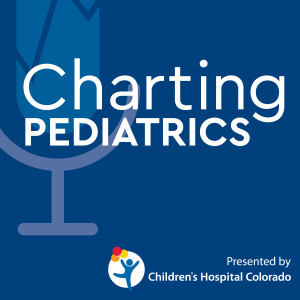
Modernizing Medical School: How a Clinical Curriculum is Changing Student Success
 2023-10-03
2023-10-03
During the 2022-2023 admission cycle, about 22,700 students enrolled in medical school in the United States. In this country alone, we have 154 medical schools offering an MD program. Many of these schools are actively working to incorporate modern learning principles into their structure. It’s all a part of a larger goal to align the forces affecting the delivery of care with educational priorities. Over time, comprehensive care has become a widely accepted standard for modern medicine; it puts positive patient outcomes at the forefront. That’s why creating those environmental opportunities are crucial to medical students as they prepare for a long career at the bedside. A Longitudinal Integrated Clerkship, or LIC, is a clinical curriculum in which students participate in the comprehensive care of patients over time. “LIC students have been found to experience lasting improvements in their patient centeredness, in their empathy, and also student satisfaction is higher,” says Amy Grover, MD, an assistant professor of pediatrics and pediatric hospital medicine.
Patient-student relationships are at the heart of LICs. We see these across the scope of medical education worldwide, but there is something unique about the LIC model here at Children’s Hospital Colorado. Dr. Grover is a guest on today’s episode, along with Meghan Treitz, MD, an associate professor of pediatrics and general pediatrics, and Margie Rodgers, an LIC coordinator. “One of the advantages of this model is students get exposure to the clinical world earlier and also at the end of their second year have had exposure to all of the core disciplines so planning for residency and career is actually made a little bit easier,” Dr. Treitz says.
Some highlights from this episode include:
- What an LIC is and how it works
- The advantages of an LIC curriculum compared to other medical education practices
- How students learn every discipline through an LIC in a pediatric hospital setting
- Stories about unique patient care experiences from students
Articles referenced in the podcast:
Hirsh DA, Ogur B, Thibault GE, Cox M. "Continuity" as an organizing principle for clinical education reform. N Engl J Med. 2007 Feb 22;356(8):858-66
Hirsh et al. Better learning, better doctors, better delivery system: possibilities from a case study of longitudinal integrated clerkships. Med Teach 2012;34(7):548-54.
Walters, et al. Outcomes of longitudinal integrated clinical placements for students, clinicians and society. Med Educ 2012; 46: 1028-1041
Poncelet, et al. Development of a longitudinal integrated clerkship at an academic medical center. Med Educ Online 2011; 16: 5939.
Hirsh D, Gauberg E, Ogur B, et al. Educational outcomes of the Harvard Medical School—Cambridge integrated clerkship: a way forward for medical education. Acad Med. 2012;87:643-50
Teherani, et al. Outcomes of Different Clerkship Models: Longitudinal Integrated, Hybrid and Block. Acad Med 2013; 88: 1-9
Gaufberg E, Hirsh D, Krupat E, et al. Into the future: patient-centeredness endures in longitudinal integrated clerkship graduates. Med Educ. 2014;48:572-82.
Flick RJ, Adams JE. Alliance, trust, and loss: experiences of patients cared for by students in a longitudinal integrated clerkship. Acad Med. 2019
Beard AS, Candy AE, Anderson TJ, Derrico NP, Ishani KA, Gravely AA, Englander R, Ercan-Fang NG. Patient satisfaction with medical student participation in a longitudinal integrated clerkship: a controlled trial. Acad Med. 2020. 95(3):417-424.
McKenna et al. The missing link: connection is the key to resilience in medical education. Acad Med 2016
Wald, Hedy S. PhD Professional Identity (Trans)Formation in Medical Education, Academic Medicine, 2015
For more information on Children’s Colorado, visit: childrenscolorado.org
More Episodes
Create your
podcast in
minutes
- Full-featured podcast site
- Unlimited storage and bandwidth
- Comprehensive podcast stats
- Distribute to Apple Podcasts, Spotify, and more
- Make money with your podcast
It is Free
- Privacy Policy
- Cookie Policy
- Terms of Use
- Consent Preferences
- Copyright © 2015-2024 Podbean.com





